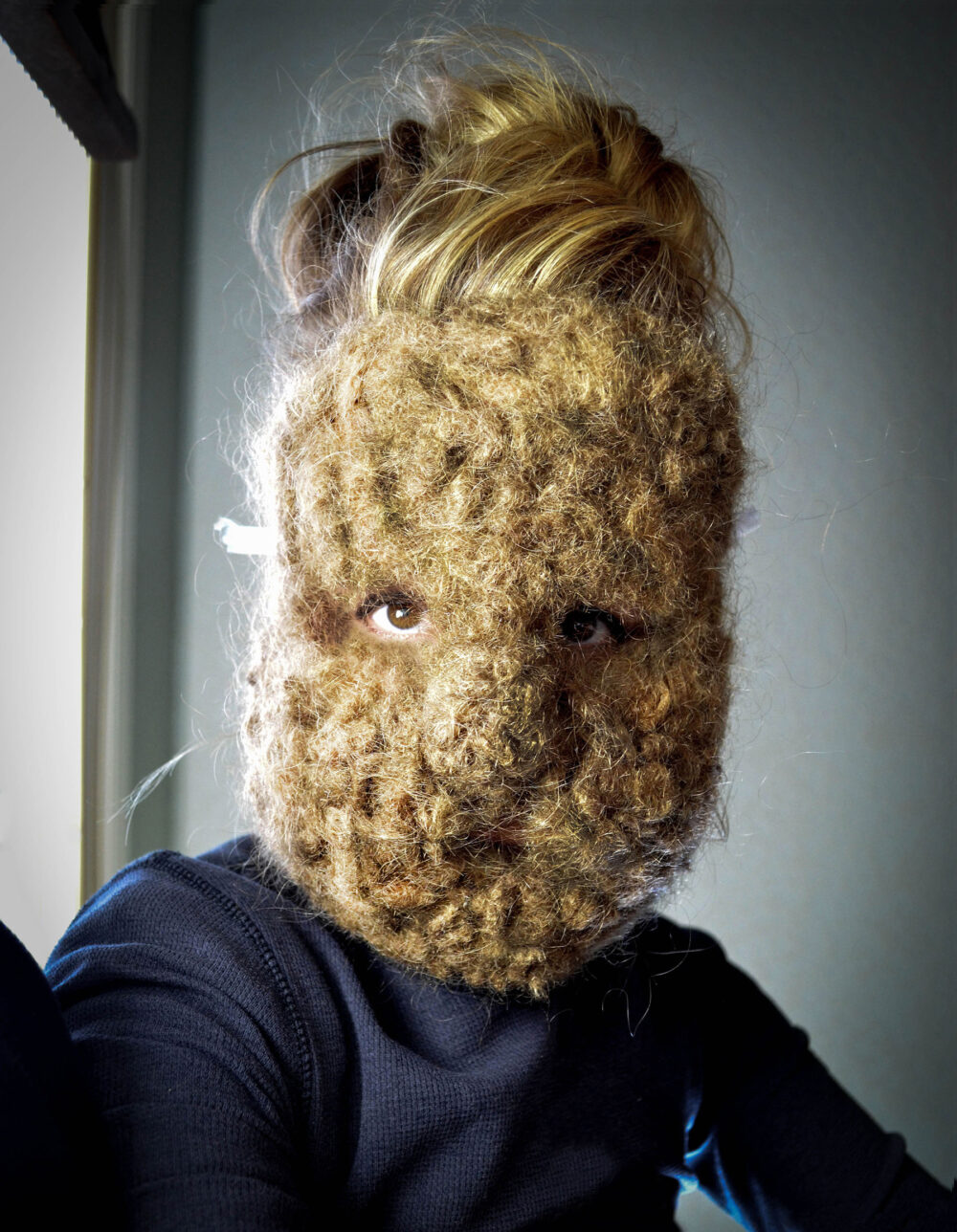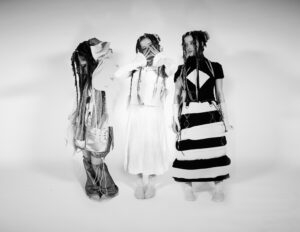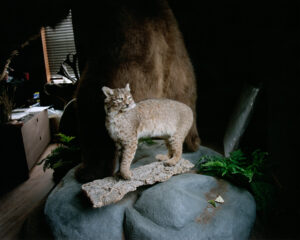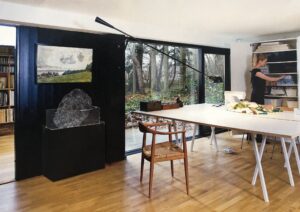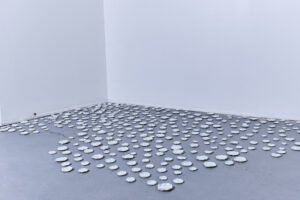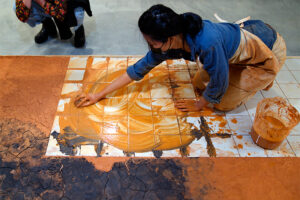Sympoetics of Squirrealism
Carollyne Yardley

Photograph by Carollyne Yardley.

canvas, 78′′ x 60′′. Photograph by Carollyne Yardley.

hair, foraged used blue nitrile gloves, resin, acrylic nails, armature, 25″ x 32″ x 8″ (each hand 10″ x 3″ x 4″). Photograph by Carollyne Yardley.

seedling grown from foraged acorns, soil and oak barrel from garden (14″ x 9″ x 9″), gifted human hair, foraged
used blue nitrile gloves, resin, acrylic nails, armature 25″ x 36″ x 24″, (each hand 10″ x 3″ x 4″). Photograph by Carollyne Yardley.

seedling grown from foraged acorns, soil and oak barrel from garden (14″ x 9″ x 9″), gifted human hair, foraged
used blue nitrile gloves, resin, acrylic nails, armature 25″ x 36″ x 24″, (each hand 10″ x 3″ x 4″). Photograph by Carollyne Yardley.


Sympoetics of Squirrealism (2021), researches the ethology of grey squirrels[1] and their links to human systems to speculate possible futures in hybrid human development through artistic practice. What began with asking what grey squirrels can teach us about Western-centric ideas of taxonomy and supposed boundaries between species systems led to thinking about the matter of molecules we inhabit, inhabit us, move around and between us, and are made of us. I began creating art and thinking with grey squirrels after an interspecies boundary was crossed when I held an injured squirrel in my hands. The intimacy of the encounter touched me and evoked a desire to document my alliance to the squirrel through artwork—thus, Squirrealism was born. Squirrealism developed into a method of art-making that channels conceptual and material connections between species to think and make, as feminist philosopher Donna Haraway says, “sympoetically.”
Often, my process begins by channeling squirrel behaviour and drey (nest) making techniques by walking, foraging, and weaving together salvaged remnants composting in the soil around trees inhabited by grey squirrels to stimulate new thought. Intuition, touch, and chance figure into the process during foraging, and again in the studio through extrasensory perception called psychometry (a type of telepathy using my hands) to collaborate through the materials. I also activated Squirrealism by collecting and burying Garry oak acorns. Through this process, I have made important discoveries by creating artworks that forge critical links between life for urban nonhuman animals and global environmental concerns. The material-semiotic entanglements of the artworks are manifest through materials in a shared squirrel-human environment resulting as an artistic hybrid of new bodily forms through assemblage, photography, and installation.
The artworks for this thesis emerged through a series of seasonal projects and during the outbreak of the Covid-19 pandemic. The final thesis installation presents a portrait of squirrel-human sympoiesis that developed as experiments unfolded. By attuning with collecting, burying, and nest making behaviours, I aim to disrupt anthropomorphic assumptions and situate my human animality in a sympoetic relationship with squirrels. My artistic research also provides insight into thinking critically about biological entities temporally connected to settler colonial timelines and boundaries in an urban environment.
[1] The Eastern grey squirrel (Sciurus carolinensis) is endemic to eastern and central North America and is also an essential natural forest regenerator. Grey squirrels are native to what is colonially known as five Canadian provinces, but by crossing provincial boundaries, either by their own agency or by human intervention, they have been incorrectly associated with being an invasive species which makes them killable. After their historic range was destroyed by settler colonialism and replaced with extensive logging and land clearing, grey squirrels became known as synanthropes —species that carve out their existence within human-modified environments and are ecologically related to humans; they literally become with us (Yardley 10).
Work Cited
Yardley, Carollyne. Sympoetics of Squirrealism. 2021. Emily Carr University of Art and Design, MFA thesis.
